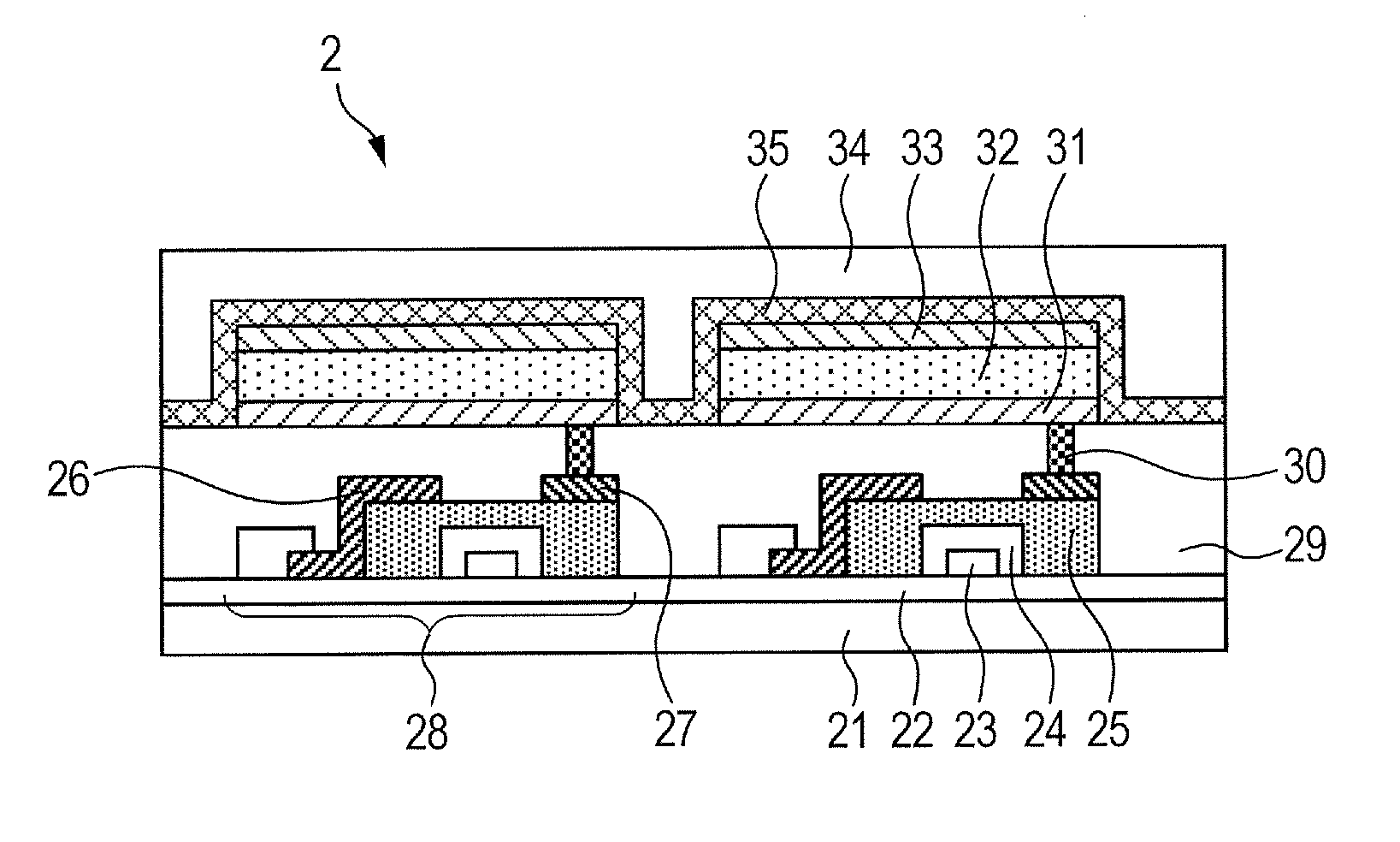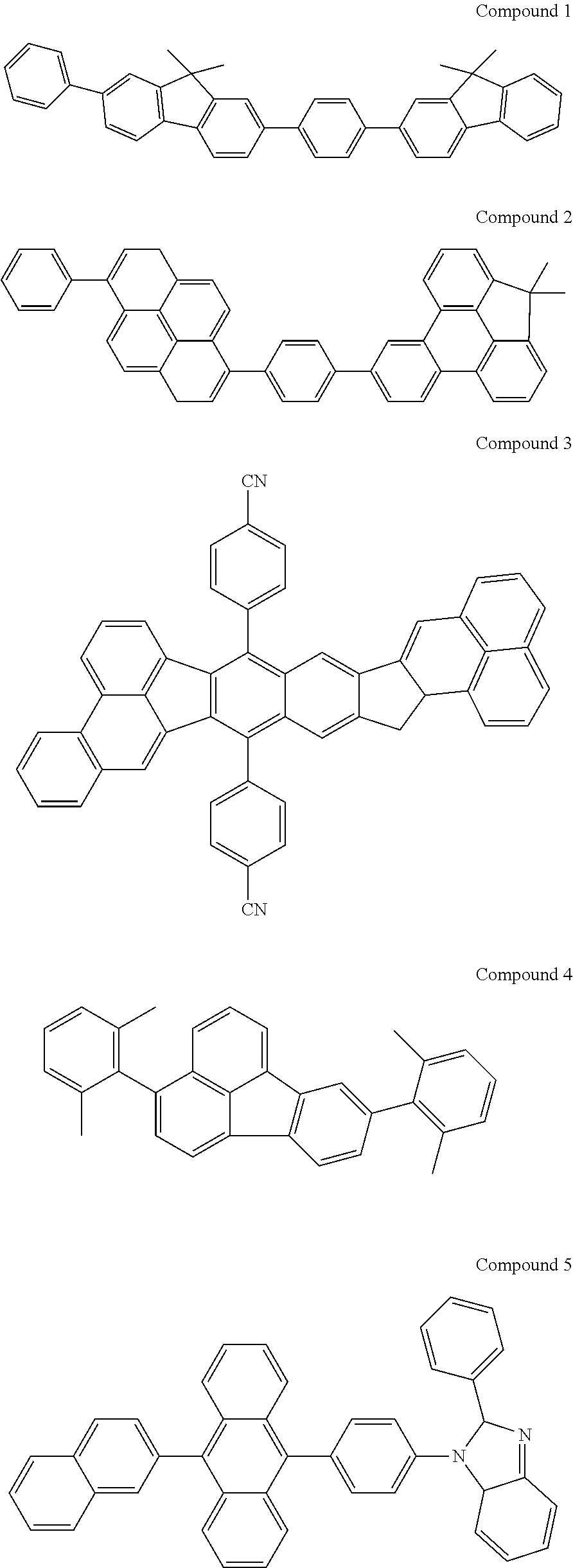Organic light emitting element
- Summary
- Abstract
- Description
- Claims
- Application Information
AI Technical Summary
Benefits of technology
Problems solved by technology
Method used
Image
Examples
example 1
[0084]In this example (Example 1), an organic light emitting element including an anode, a hole injection layer, a hole transport layer, an emission layer, a hole blocking layer, an electron transport layer, an electron injection layer, and a cathode laminated in the stated order on a substrate was produced by a method to be described below. Part of the materials used in this example are listed below.
[0085]First, indium tin oxide (ITO) was formed into a film on a glass substrate (substrate) by a sputtering method to form the anode. At this time, the thickness of the anode was set to 110 nm. Next, the substrate on which the anode had been formed was subjected to ultrasonic cleaning with acetone and isopropyl alcohol (IPA) sequentially. Next, the cleaned product was subjected to boil cleaning with IPA, followed by drying. Further, the dried product was subjected to UV / ozone cleaning. The substrate with the anode treated as described above was used as a transparent and conductive suppo...
reference example 1
[0095]An organic light emitting element was obtained by the same method as that of Example 1 except that in Example 1, a hole transport layer was formed by using Compound 11 shown below and Compound 6 was used as a host to be incorporated into an emission layer.
example 2
[0096]An organic light emitting element was obtained by the same method as that of Example 1 except that in Example 1, Compound 10 shown below was used as a host to be incorporated into an emission layer.
PUM
 Login to View More
Login to View More Abstract
Description
Claims
Application Information
 Login to View More
Login to View More - R&D
- Intellectual Property
- Life Sciences
- Materials
- Tech Scout
- Unparalleled Data Quality
- Higher Quality Content
- 60% Fewer Hallucinations
Browse by: Latest US Patents, China's latest patents, Technical Efficacy Thesaurus, Application Domain, Technology Topic, Popular Technical Reports.
© 2025 PatSnap. All rights reserved.Legal|Privacy policy|Modern Slavery Act Transparency Statement|Sitemap|About US| Contact US: help@patsnap.com



